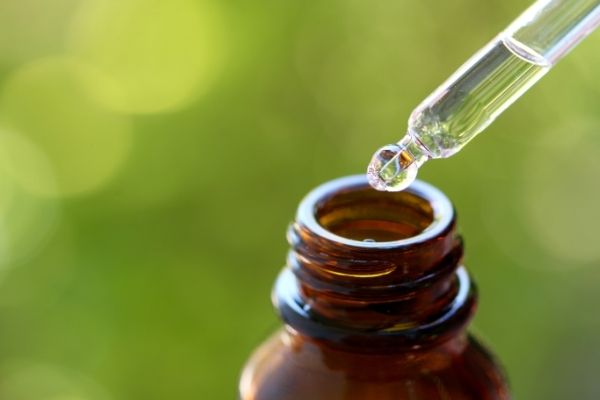A common question we get is “how to use CBD tinctures”. so today we are going to answer this in-depth about how to use tincture, CBD tincture dosing, and an overview of what is CBD.
The popularity of cannabidiol, commonly known as CBD, has led to an explosion of products on the market. The FDA decided in 2018 to make a CBD-based antiseizure medication a Schedule V drug (meaning legal with a prescription; regular cannabis is a Schedule I drug and illegal). You can see CBD sold today in seemingly bizarre products like Carls’ Jr. cheeseburgers or pet chews, offering relief for everything from anxiety and joint pain to epilepsy and obsessive-compulsive disorder. Yet, not many people know how to use CBD in proper doses to get the optimum effect. Most CBD treatments take the form of a tincture, allowing a person to simply dose the necessary amount onto their tongue. This is easier said than done, however, and careful attention needs to be paid to the tincture process to avoid too much consumption or too little.
Let’s start with the basics. What is CBD? What is hemp? What is a tincture? Read OUR CBD Tincture FAQ’s Here

Cannabidiols
There are two main active ingredients in cannabis plants, cannabidiol (CBD) and tetrahydrocannabinol (THC). They have a similar atomic makeup, but a difference of their structure produces drastically different effects in the human body.
THC is the psychoactive component, responsible for binding with receptors in the brain to create a feeling of euphoria that is simply called the “high” of cannabis.
By contrast, CBD has no psychoactive properties and does not bind with brain receptors, meaning a person who takes CBD will not feel like they have smoked or ingested cannabis.

Hemp and CBD
Hemp is the male form of cannabis that produces very little THC; the female form of cannabis is the type sold in dispensaries. Hemp, by law, cannot contain more than 0.3% THC by mass, meaning it contains only a fraction of the THC found in medicinal or recreational cannabis, much like how non-alcoholic beer contains only a fraction of the alcohol of regular beer.
Where hemp doesn’t move the needle in terms of THC, it excels at producing CBD, making it the source for CBD tinctures, gummies, oils, or salves.
Industrial hemp is actually grown in much higher quantities than recreational cannabis. Since state and national law is more lax about the cultivation and sale of hemp (although in some states hemp and CBD are still considered illegal narcotics), its cultivation is exploding; the U.S. produced 100 times more hemp in 2019 than it did in 2014, making it (by far) the fastest-growing crop plan in the country.
Passage of the 2018 Farm Bill led to more legal protections and markets for hemp and CBD production, in turn creating a huge industry almost overnight. While CBD is used for a variety of health concerns, some people simply enjoy it because it promotes relaxation or helps them to get a better night’s sleep.
Tinctures
A tincture is a term for any concentrated herbal extracts available in a liquid solution. Tinctures of herbs and plants like garlic or chamomile can be found in many health and fitness stores, promising relief from stress, high cholesterol, and even cancer. Not all tinctures are medicinal in nature; you can use a vanilla tincture to flavor your coffee each morning, or a lemon tincture to season a bland meal. Tinctures are typically sold in a glass jar with a stopper and a rubber nipple, making it easy to extract the liquid and then apply it drop-by-drop.
To create a CBD tincture, a manufacturer will take the hemp plant and put it in an alcohol solution. The alcohol absorbs the chemical properties of hemp, including its cannabinoids. The hemp is then removed and the alcohol is burned away, leaving only a solution of the CBD itself.
Tinctures are not licensed by the FDA, meaning that individual servings and quantities are best left to an individual’s comfort. Personal factors like medical history and metabolism will influence how much CBD you should take in a dose. Since tinctures provide one of the most precise mechanisms for CBD dosing, they allow each individual the chance to see what quantities are most beneficial. Interestingly, the history of CBD tinctures is far older than you might think. The first recorded instance of using these tinctures appears in a medical journal from 1843, long before the passage of the first anti-narcotics laws in the United States.

Safety Standards
Just because tinctures are not FDA licensed does not mean that they are not carefully monitored by health professionals. CBD products come with third-party independent quality tests for purity, safety, and quality. They also include information on where the hemp they are derived from is grown.
Additionally, it’s virtually impossible to overdose on CBD. Studies have found that the threshold limit for human consumption is well over an entire liter. Patients who consumed 1200 milligrams of CBD over the course of a day showed no adverse side effects or health concerns.
About the only concern with CBD is that it can inhibit an enzyme in the bloodstream meant to boost blood flow. Since this inhibition is also found in grapefruit juice, check any current medication to see if it warns against consuming grapefruit: this warning should also be applied to CBD.
CBD products come with third-party independent quality tests
While cannabis is known for health effects like inhibited memory, slow reactions, and dry mouth, this is due to THC rather than CBD. Negative side effects of CBD are rare but not harmful, and may include fatigue and dizziness.

Many CBD producers make their products combustible or edible; producers have rolled out gummies, cookies, and a wide variety of other CBD snacks. Even Martha Stewart has a CBD edible product line, while Bon Appetit has recipes for CBD snacks, reflecting how popular these treats have become. Edibles are beneficial for several reasons, but a tincture makes CBD absorption much faster. You may feel the benefits as soon as the tincture solution hits your tongue.
Additionally, tinctures make it easier to be specific about your dose. While a gummy may say it contains 5 ml of CBD, you can’t be sure how much to take if you want less than 5 ml. By contrast, the scientific measurements on a tincture will make it clear exactly how much you put into your system.
Finally, tinctures ensure that your body absorbs almost all of the CBD into your bloodstream due to their high bioavailability. By contrast, consumed edibles lose some of their CBD during the digestion process, meaning you may have to eat slightly more to achieve the desired results. Tinctures minimize side effects and save money on dosages.
In comparison to combustion of CBD, tinctures are far safer for your health. Although a vaporizer can quickly deliver CBD benefits, the health risks of inhaling hot steam, smoke, or vaporized concentrates remains to be seen. Furthermore, dosing with a tincture means no setup and no cleanup afterwards.

Types of CBD Solutions
Just as not all plants in a tincture solution produce the same effect, so too do the different types of CBD solutions affect users.
A full-spectrum extract preserves the chemical formula of the underlying cannabinoid, intending to maintain all of the benefits of cannabinoids without oxidation.
A full-spectrum CBD tincture extract will contain a slight quantity of THC, the active compound in cannabis, but no more than trace amounts, and not enough for a user to feel “high” or for the CBD to be considered an illicit substance (provided a state has legalized CBD itself). Since these cannabinoids are not removed from full-spectrum CBD, these tincture solutions may smell and taste like cannabis.
A broad-spectrum CBD solution will have all THC eliminated from its compound by steaming or extraction. Broad-spectrum CBD, however, contains compounds from parts of cannabinoid that provide a heightened effect, and because the chemical compounds in a broad-spectrum CBD solution work together, they may make a person feel more effects from a dose.
Broad-spectrum CBD may be a better choice for those who have tried full-spectrum extracts but found them less effective than desired. It may also be more beneficial for those who may face drug tests at a job, because it will not leave any THC in a person’s bloodstream (few drug tests check for CBD).
CBD isolate is the last type of solution. It has had all of the other cannabinoids chemically removed from its solution (including THC), meaning that it is the purest form of CBD. While you may think that a pure CBD product will give the most relief, some studies of isolate solutions suggest that they are less effective in pain relief or mood management because they lack the other cannabinoids.
The association of multiple cannabinoids with greater relief is known as the “entourage effect,” where many types of cannabinoids in one CBD solution function better than pure CBD extract.

Dosing With a Tincture
The most common type of tincture dose is a simple drop under the tongue, rubbing this drop gently into the application area and swallowing the remainder. This quickly gets the CBD into a person’s bloodstream.
It’s also possible to use the tincture like a lotion bottle if you have a condition like sore joints, arthritis, or tendonitis, simply apply the CBD solution over your skin at the area and rub it in gently.
Oral dosing works faster than skin-on dosing because capillaries in the tongue, gums, and cheeks absorb CBD faster than the skin. It can also be added to coffee or tea to get some (but not all) of the absorption properties when drunk.
How much dosage is best? Since there are no FDA approved guidelines, it will depend on the individual and their preferences. Dr. Steve Patierno, Deputy Director of the Duke Cancer Institute and CBD advocate, suggests no more than 1 ml of solution per dose (most tincture bottles hold 30ml). Carefully monitor your reaction to this dose and change as necessary.
If you swallow solution after dosing beneath the tongue, this CBD will take effect hours after the initial dosing, as it takes time for the digestion system to get it into your bloodstream. As such, you may have a delayed response to oral dosing.

How To Dose Orally
Take your tincture and shake it up slowly so that the CBD better blends with the liquid solution. Use the dropper to measure out the desired amount. Round up or down to the nearest milliliter so that you have an exact number to go off if you need to adjust future doses. Put the dropper tip below your tongue and squeeze out all the drops.
Swish the CBD solution in your mouth for about three minutes, using your tongue to rub it in to gums and cheeks, and swallow the remainder. Consuming a CBD tincture dose with a high-fat meal, like pizza or fried food, will boost the absorption because CBD is fat-soluble and increases the absorption four- or five-fold.
Consuming CBD orally is the fastest way to receive its benefits.
Conclusion
CBD products are excellent choices for those looking for solutions to chronic pain, mood disorders, and certain types of physical and mental ailments, but who do not want to consume THC. Made from hemp, CBD does not make a person feel “high” like cannabis, but instead provides a sensation of relaxation and relief.
Dosing with a tincture is the most efficient way to get CBD into your bloodstream, potentially leading to immediate results. Users should carefully monitor the quantity of a tincture and the results to make certain they achieve ideal dosage.
Full spectrum, broad spectrum, and isolate CBD all have different advantages and disadvantages.



